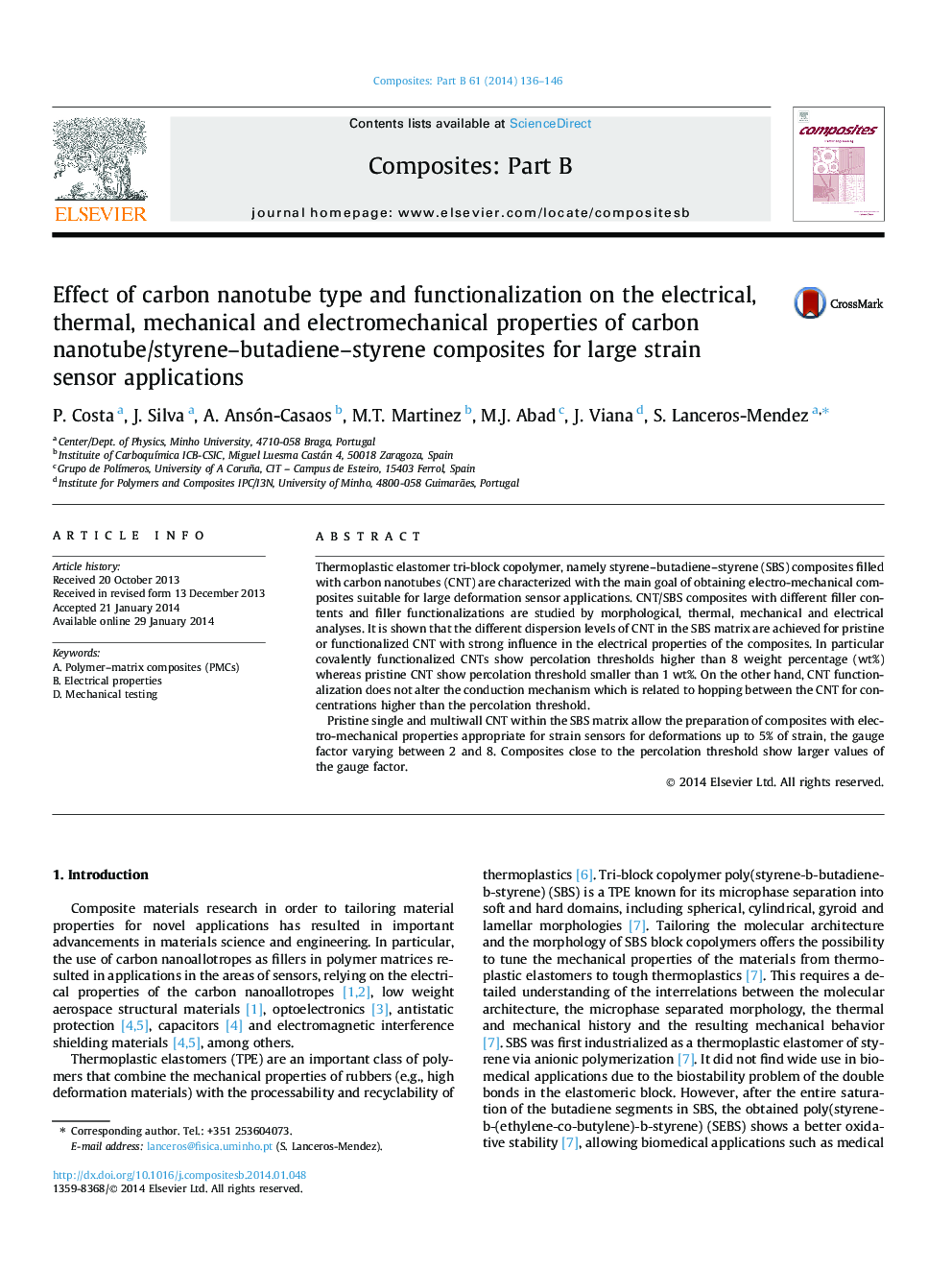| Article ID | Journal | Published Year | Pages | File Type |
|---|---|---|---|---|
| 817706 | Composites Part B: Engineering | 2014 | 11 Pages |
Thermoplastic elastomer tri-block copolymer, namely styrene–butadiene–styrene (SBS) composites filled with carbon nanotubes (CNT) are characterized with the main goal of obtaining electro-mechanical composites suitable for large deformation sensor applications. CNT/SBS composites with different filler contents and filler functionalizations are studied by morphological, thermal, mechanical and electrical analyses. It is shown that the different dispersion levels of CNT in the SBS matrix are achieved for pristine or functionalized CNT with strong influence in the electrical properties of the composites. In particular covalently functionalized CNTs show percolation thresholds higher than 8 weight percentage (wt%) whereas pristine CNT show percolation threshold smaller than 1 wt%. On the other hand, CNT functionalization does not alter the conduction mechanism which is related to hopping between the CNT for concentrations higher than the percolation threshold.Pristine single and multiwall CNT within the SBS matrix allow the preparation of composites with electro-mechanical properties appropriate for strain sensors for deformations up to 5% of strain, the gauge factor varying between 2 and 8. Composites close to the percolation threshold show larger values of the gauge factor.
